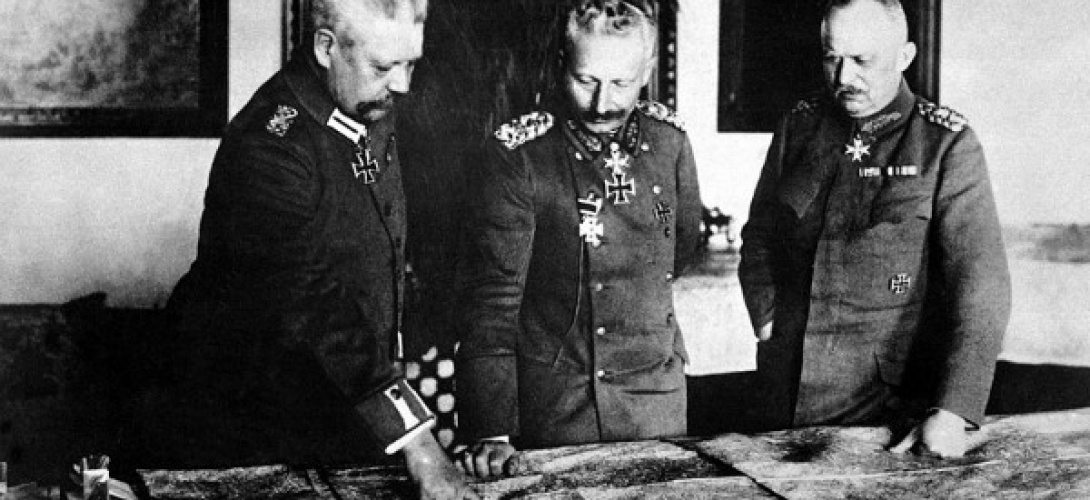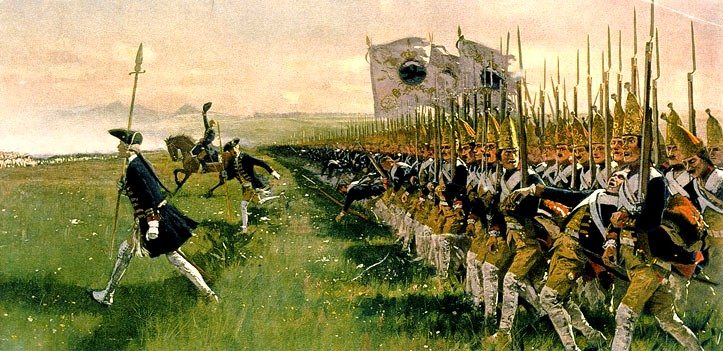There’s a tendency in the modern world to typify wargaming (strategy games) as something reserved solely for overweight, geeky teens with lots of dice and a lack of social skills. However, this is simply not true. Wargamers can be found across various demographics and when it comes to doing real warfare many are very capable active duty warfighters.
Modern wargaming can trace its roots back to the training system used to train Prussian and German armies called Kriegsspiel (lit: “war play” or “war game”). The first set of these rules was created in 1812 by Lieutenant Georg Leopold von Reiswitz and his son Georg Heinrich Rudolf von Reiswitz of the Prussian Army.
Von Reiswtiz titled his rules, Instructions for the Representation of Tactical Maneuvers under the Guise of a Wargame. Anyone who has an interest in tactics and strategists should know the name Helmuth von Moltke the Elder, Chief of Prussian General Staff. Von Loltke thought well enough of Krieggspiel to insist it be used as one of the warfare theory learning systems made available to his men. With the backing of Otto von Bismarck, Kriegsspiel became a teaching tool for German and Prussian officers. As a result of the Prussian military utilizing Kriegsspiel it other militaries began to adopt its use too. One notable benefit of using Krieggspiel was Motlke’s Prussian officers became more independent and responsible.
The literal translation of the German word Krieggspiel (war play) can be misleading to those unfamiliar with wargaming and its applications. The word game is found in the conjunction wargame yet this doesn’t mean that all gameplay is absent of seriousness. The general purpose of all wargaming per Peter Perla’s 1990 book The Art of Wargaming, Naval Institute Press, 1990, p.274 is ‘to immerse participants in an environment with the required level of realism to improve their decision making ability and/or the actual decisions they make.’
Krieggspiel involves gaming mechanics and includes several elements such as “aims and objectives, rules, scenarios, players, umpires, analysis, friction, uncertainty, chance and luck.”
Wargames are generally categorized as science fiction, fantasy, historical or hypothetical. Of these, historical games are the most popular and form the largest group. Some readers may be familiar with the wargames called Warhammer 40,000 or Waterloo. These are just two of the many games that fall into these realms. But few people know that the famous sci-fi writer Writer H.G. Wells had his hands involved in the formulation of the wargaming hobby as well. His book called Little Wars brought forth the advent of modern day miniature gaming. After having dinner one night with a friend the two began to shoot down toy soldiers using toy cannon. Wells along with his friend decided then to create a good Kriegsspiel game.
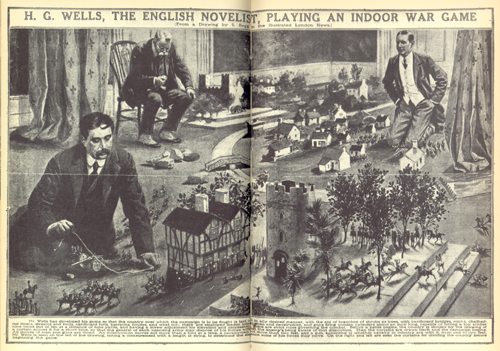
Little Wars included basic rules and playing pieces such as cavalry, infantry, artillery and simple rules of movement and firing, done by using a string cut to a set length to determine the distance a playing piece could move. Eventually each Little Wars game included an appendix involving military logistics, military engineers, cavalry charges, and railway transport of troops played over larger spaces.
Nearly a hundred years later mass produced board games are available to the consumer. I recall the many good hours I spent with my brothers playing Ogre, Tobruk, Jutland, Empire of the Petal Throne, Iron Men and Wooden Ships, and whatever game we could purchase with the few dollars we scrounged together. We play tested nearly every game we could. The wargame selection during the late 1970’s was limited but would soon make serious minded technical fare available to the average kid on the block.
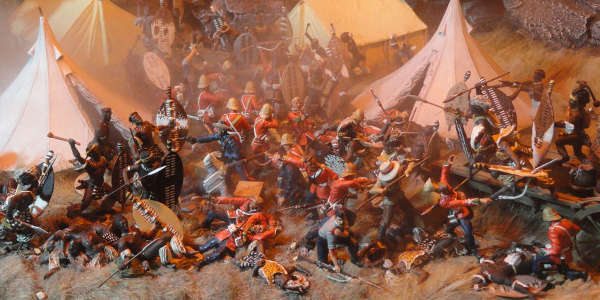
Wargames exist in varying forms of complexity. Beer and Pretzl games, such as Axis and Allies, and Risk are fundamentally simple to play. Other wargames require extensive rulebooks, have a high level of historical realism and include a lot of detail and may include movement of up to hundreds of gaming-pieces. Games such as the Napoleonic Wars, American Civil War, and World War II still remain popular. Naval warfare, land warfare and aerial warfare are all popular and all of these can embrace warfare on different scales:
Grand strategy — military strategy at the level of movement and use of an entire state or empire’s resources, with the focus being on a war (or series of wars) usually over a long period of time. Individual units, even armies, may not be represented; instead, attention is given to theaters of operation. All of the resources of the nations involved may be mobilized as part of a long-term struggle. This simulation almost always involves political, economic, and military conflict. At the most extreme end of this is the branch of strategy games in which the player assumes the role of an entire nation-state’s government where not conducting war is a possibility. Axis and Allies, Risk, and Empires in Arms are examples of this type of wargame.
Strategic — military units are typically division, corps, or army-sized, rated by raw strength. At this scale, economic production and diplomacy are significant. This sub-genre will often make use of all branches with the whole force of the engaging nations, covering entire wars or long campaigns.
Operational — common units are battalion to divisional size, carrying a value based on their overall strengths and weaknesses. Weather and logistics are significant factors, although a single army is the largest player-controlled element in most cases. Other branches of military force are more or less abstracted, having a mere campaign generally span the session of play.
Tactical — units range from individual vehicles and squads to platoons or companies, and are measured by the types and ranges of individual weaponry. A solitary force, others occasionally intervening, will usually cover the single battle or part of a large battle to be simulated. Examples of this kind of game are Memoir ’44, and Dust Warfare.
Skirmish — represented by individual soldiers, units may have tracked wounding and ammunition count. A game is composed of a small firefight, introducing the “man-to-man” scale; the first of this type in the modern era of board wargames include Patrol and Sniper! Early role-playing games were derived from skirmish wargames, and many are still played as such.
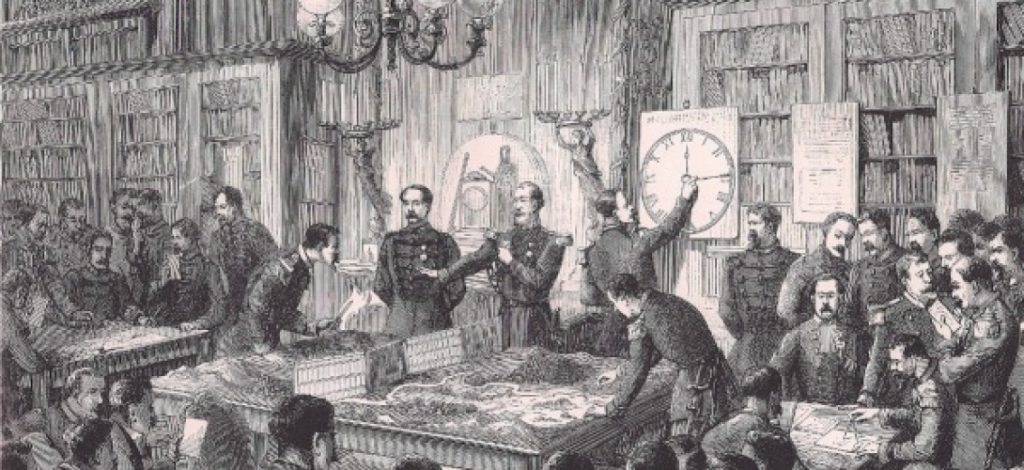
Linear thinking: This is the process of thought following known cycles or step-by-step progression where a response to a step must be elicited before another step is taken. Basically, if he does X are you going to do Y? Will you move your pieces differently in anticipation of him moving his pieces the same way every time?
Synergy: This is studying the interaction of elements that when combined produce a total effect that is greater than the sum of the individual elements, contributions, etc.; synergism. You are able to pull all the pieces apart and see how they work individually (ex: sniper, vehicle, soldier) and how they can all work together to cause mayhem and carnage.
Synchronous movement: This is where you can get common timing and getting your forces to operate at exactly the same period of time. If you are trying to hammer away at one of your enemies flanks and are unsuccessful, after a while you might get the hint that enveloping him (like the Zulu bull horns) might be better. Learning to use all of your elements at the same time requires good planning, memory and concentration.
Contingencies: How will you move you pieces is dependent on chance or on the fulfillment of a condition; uncertainty; fortuitousness. What do you do when your skirmishers are destroyed, or your building has been breached.
Wargaming requires players to work on improving their concentration and memory. Many players who get into military gaming such as WW II, WW I, Zulu, Napoleonics or anything historical
have a very good idea about what weapons were used, the type of armor a vehicle had and how quickly a unit could move. Certainly, the playing pieces have to move inches rather than miles, and under playing rules but players gain an encyclopedia of knowledge about strategy and equipment.
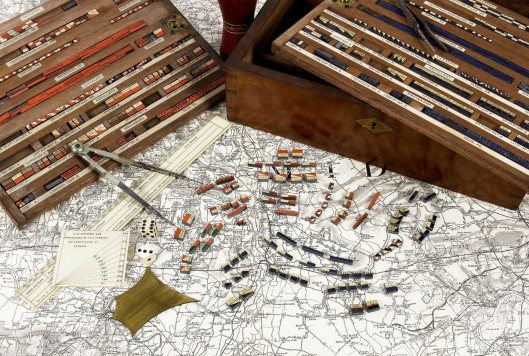
For those who are curious about wargaming and its application in world affairs, take a look at the article by the Washington Institute. These types of wargames run by respected think-thanks are different from the paper/board game systems played by gamers but these are useful in understanding various strategies. Currently they are looking at strategies for preventing a Nuclear Iran. Here are some of the findings from three of the wargames conducted. Seems like a no-brainer to me. We know who the bad guys are and the good guys.Why play them? Its good to see if your conclusions could be true.
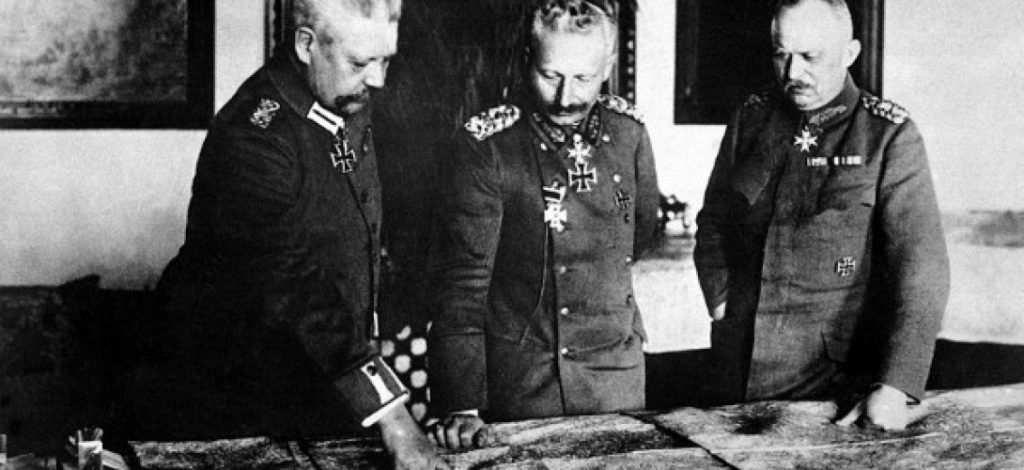
The Harvard war game. Organized by the Belfer Center for Science and International Affairs at Harvard’s Kennedy School of Government, this game explored how the confrontation over Iran’s nuclear program might evolve in the coming year. Reported results included:
- The United States could not get any meaningful support for sanctions.
- Russia and China — both of which will be key players if sanctions are to work — conducted secret negotiations with Iran.
- The U.S.-Israeli relationship deteriorated dramatically during the game, leading to a deep diplomatic crisis.
- Iran saw itself in a strong position and played accordingly.
- Iran emerged better off at the end of the game than it had been at the beginning. By December 2010, it had doubled its supply of low-enriched uranium and was proceeding to weaponization.
According to one participant, Iran “never felt seriously threatened” and could “win” the game easily. Indeed, most observers would probably characterize the outcome as a win for Iran and a defeat for the United States and Israel.
The Tel Aviv war game. Organized by the Institute for National Security Studies, the Tel Aviv simulation explored U.S.-Iranian nuclear negotiations and potential Israeli responses. Reported results included:
- Iran assumed a strong position in the game based on a clear objective: obtaining nuclear weapons.
- Israel and the United States lacked clear goals and strategies for dealing with Iran’s program.
- The Iranians saw the United States as weak and indecisive but viewed their own position as strong.
- Israel was perceived as being unhelpful to the United States.
- At game’s end, Iran continued its nuclear program, neither persuaded nor deterred.
The Brookings war game. Conducted at the institution’s Saban Center for Middle East Policy in Washington, D.C., this game explored how Israel, Iran, and the United States might respond to an Israeli military strike against Iranian nuclear facilities. Reported results included:
- The United States was unhappy with Israel over the attack.
- The United States tried to talk tough with Iran but also sought direct negotiations.
- The United States attempted to stay out of the conflict.
- The U.S. response was limited and defensive.
- Iran interpreted U.S. behavior as weak and was emboldened by this perception.
Sure, these war games are played by geeky analysts and academics but if you want to be a well-rounded thinking man, being able to bench-press over 300 and knowing tactics and strategy ain’t such a bad thing. Wargaming is communal, it helps you understand one another better for team cohesiveness, helps you use a different part of your noggin, and when you’re not working the physical muscles it lets you ‘geek’ out. Some games come in ziplock baggies and have few playing pieces so you can transport them without hassle.
The list below is not extensive. The following list is notable for the reasons indicated. There are a lot of wargames on the market. If you have the time, try playing a game or two. There are a lot of good choices out there to expand your mind.
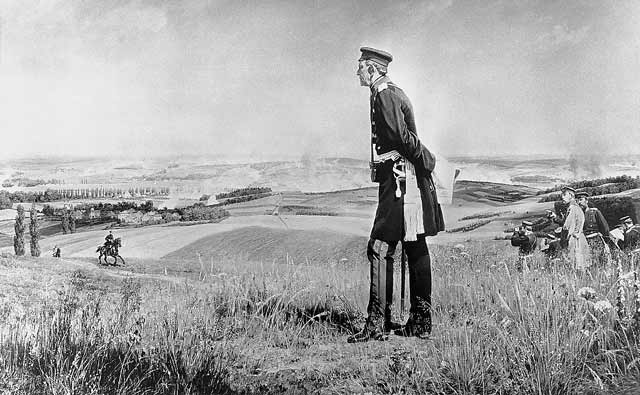
Founders
- Georg Leopold von Reisswitz and his son Georg Heinrich Rudolf von Reisswitz – inventors of Kriegsspiel.
- H.G. Wells – Pioneer in miniature wargaming, author of Little Wars. His usual companion in wargames was Jerome K. Jerome (of Three Men in a Boat fame).
- Jack Scruby – After H.G. Wells, he did the most to make miniature wargaming a respectable hobby. He also popularized miniatures wargaming with a cheaper production process for miniature figures, publishing the first miniature wargaming magazine, the War Game Digest, and community building.
- Don Featherstone – Known in the UK as the “co-father” of modern miniature wargaming.
- Phil Dunn – founder of the Naval Wargames Society, the only international organisation of naval wargaming to date, and author of Sea Battle Games.
- Charles S. Roberts – Known as the “Father of modern board wargaming”, designed the first modern wargame, as well as the company most identified with modern wargames (Avalon Hill).
- Phil Barker – Co-founder of (Wargames Research Group),[17] co writer of WRG Ancients in 1969 and of DBA the innovative 1990 ruleset.
Board versions
- Diplomacy – (1954) a classic multi-player game from the “golden age” of wargames in which strategy is exercised off the game board as well as on it.
- Tactics II (Avalon Hill, 1958) – the wargame that launched Avalon Hill.
- Risk (Parker Brothers, 1959) – Widely accepted as the first mainstream wargame.
- Gettysburg (Avalon Hill, 1958) – the first modern era wargame intended to model an actual historical event.
- Tactical Game 3 (Strategy & Tactics Magazine game, 1969); re-released as PanzerBlitz by Avalon Hill in 1970. The very first tactical wargame. The game pioneered the use of “geomorphic mapboards” and PanzerBlitz was a game system rather than just a game in that forces could be used to depict any number of actual tactical situations rather than one specific scenario. Pioneered several ground-breaking features, such as use of various types of weapons fire to reflect battlefield conditions. Also created new level of realism in reflecting tactical armored vehicles.
- Sniper! (SPI, 1973) – along with Patrol, the first Man to Man wargames where game pieces depicted a single soldier. An adaptation of Sniper! also became one of the first multi-player computer wargames.
- Wooden Ships and Iron Men (Battleline Publications, 1974 Avalon Hill, 1976) – the definitive game of Age of Sail warfare for many years.
- Rise and Decline of the Third Reich (Avalon Hill, 1974) – The first serious attempt to model World War II in Europe in its entirety, including (in a limited way) the economic and industrial production of the nations involved. It has seen numerous versions and editions, and is currently available as John Prados’ Third Reich from Avalanche Press, and as a far more complex descendant game, A World At War, published by GMT Games.
- La Bataille de la Moskowa (Martial Enterprises, 1974) Later republished by Games Designers Workshop and Clash of Arms. With 4 maps and 1000+ counters, it is credited with being the first “monster” wargame (by famed designer Richard Berg.)
- Squad Leader (Avalon Hill, 1977) and Advanced Squad Leader (1985) have become the most prolific series of wargames, including 3 add-on modules for the former, and 12 for the latter, with additional Historical modules and Deluxe modules also having been released. ASL also sets the record for sheer volume of playing components, with thousands of official counters and 60+ “geomorphic mapboards” not counting Deluxe and Historical maps.
- Star Fleet Battles – (Task Force Games, 1978) one of the older still actively played and published wargames today; based on Star Trek, it is arguably the most successful tactical space combat system that does not rely on miniatures (published by Amarillo Design Bureau).
- Storm Over Arnhem (Avalon Hill, 1981) – pioneered the use of “point to point” or “area movement” in tactical wargames.
- Axis and Allies – (Nova Games, 1981) the most successful of Milton Bradley’s (1984) ‘GameMaster’ line in an attempt to bring wargaming into the mainstream by appealing to non-wargamers through simplicity and attractive components.
- Ambush! – (Victory Games, 1983) the first solitaire board wargame depicting man to man combat, in which each game piece represented a single person.
- Blue Max – (GDW, 1983) is a multi-player game of World War I aerial combat over the Western Front during 1917 and 1918 with an extremely easy to play mechanism but allow the development of complex strategies.
- We the People – (Avalon Hill, 1994) this game started the Card-Driven wargame movement, which is very influential in current wargame design.
Miniature versions
- Rules for the Jane Naval War Game (S. Low, Marston, 1898) – The first published miniature wargame. A 26 page rule set limited to naval miniature battles. It came in a crate measuring 4 ft. X 4 ft. X 2 ft. Written by Fred Jane. As only a handful of these games survive, they are highly collectible.[18]
- Little Wars (H.G. Wells, 1913) – The first popular published wargame rules. Includes the common miniature wargaming mechanics of dice rolling, range, line of sight, and moving in alternate turns. This game earned Wells the title “The Father of Miniature Wargaming”.[19]
- Miniature Wargames du temps de Napoleon (John Chandler, 1964) – First period-specific historical miniature wargame.[citation needed] Also the first in a long line of Napoleonic miniature wargames.
- Chainmail (Guidon Games, 1971) – An extension and distillation of rules previously published in various periodicals. Major elements of this game were adopted by the role-playing gameDungeons & Dragons. Unlike Dungeons & Dragons, Chainmail used two six-sided dice to resolve combat. Previous fantasy miniature wargames had been written, but this was the first one published. Drawing on the popularity of The Lord of the Rings, this game featured the novelties of combat magic and fantastic creatures as combatants.
- Dust Warfare – The year is 1947, and World War II still rages, fueled by the discovery of alien technology. The world’s superpowers have developed unprecedented weaponry, including lasers, phaser cannons, and massive combat walkers. These war machines stride across the battlefield, protected by their heavy armor, and devastate enemy troops with their fearsome cannons. Players assume the roles of generals, each commanding a custom-built army of squads, walkers, and heroes. Draw upon Axis might or Allied versatility as you wage ferocious battles for control of the rare ore, VK, needed to fuel the most powerful of the superpowers’ weapons.
- Warhammer Fantasy Battle (Games Workshop, 1983) – An internationally successful fantasy miniature wargame. The First Edition rules introduced innovative open unit design rules, however later editions eliminated the option to build custom units and make use of standard army lists mandatory. Warhammer was one of the first newly developed miniature wargames to enjoy popularity after role-playing games came to market in 1974. In fact, it is because of Roleplaying games becoming so popular, and people having too many models that were rarely used, that this was first published[citation needed].
- Warhammer 40,000 (Games Workshop, 1987) – A futuristic wargame featuring rival armies with different fighting styles. This wargame has very conceptual artwork suggesting a post-apocalyptic neo-gothic universe with heavy dystopic themes. Un-arguably the most profitable miniature wargame ever, it has popularized competitive tournament gameplay in large, international events sanctioned by Games Workshop.
- De Bellis Antiquitatis (Wargames Research Group, 1990) – Radically minimalist rules differentiate this game from other notable miniature wargames. A number of systems have been strongly influenced by DBA.
- Mage Knight (WizKids Inc., 2001) – Innovative game popularizing the combat dial, pre-painted plastic miniatures, and the collectible miniatures games. Mage Knight has inspired numerous collectible, skirmish miniature wargames.
- Warmachine (Privateer Press, 2003) – A steampunk-inspired miniatures game featuring steam-powered robots fighting under the direction of powerful wizards. Also has a sister game,Hordes, which features large monstrous creatures in the place of robots.
- Heroscape (Milton Bradley Company, 2004) – An inexpensive, simple wargame that has been successfully mass marketed to both younger wargamers and adults. As miniature wargaming is often an expensive hobby, Heroscape and the collectible miniatures games have opened the miniature wargaming hobby to a new demographic.
- BrikWars is a wargame that uses Lego bricks as miniatures and scenery and is steadily growing in popularity mostly due to the looseness of the rules.
- Flames of War (Battlefront Miniatures, 2002) – Popular World War II wargame at 15mm (1:100) scale, currently focusing on the European and Mediterean theatres. Splits into three time periods (Early War 1939-41, Mid War 1942-43 and Late War 1944-45) to bring some balance and historical matchups.
Develops problem-solving skillshttp://en.wikipedia.org/wiki/Wargaming
pic from Armchair General
